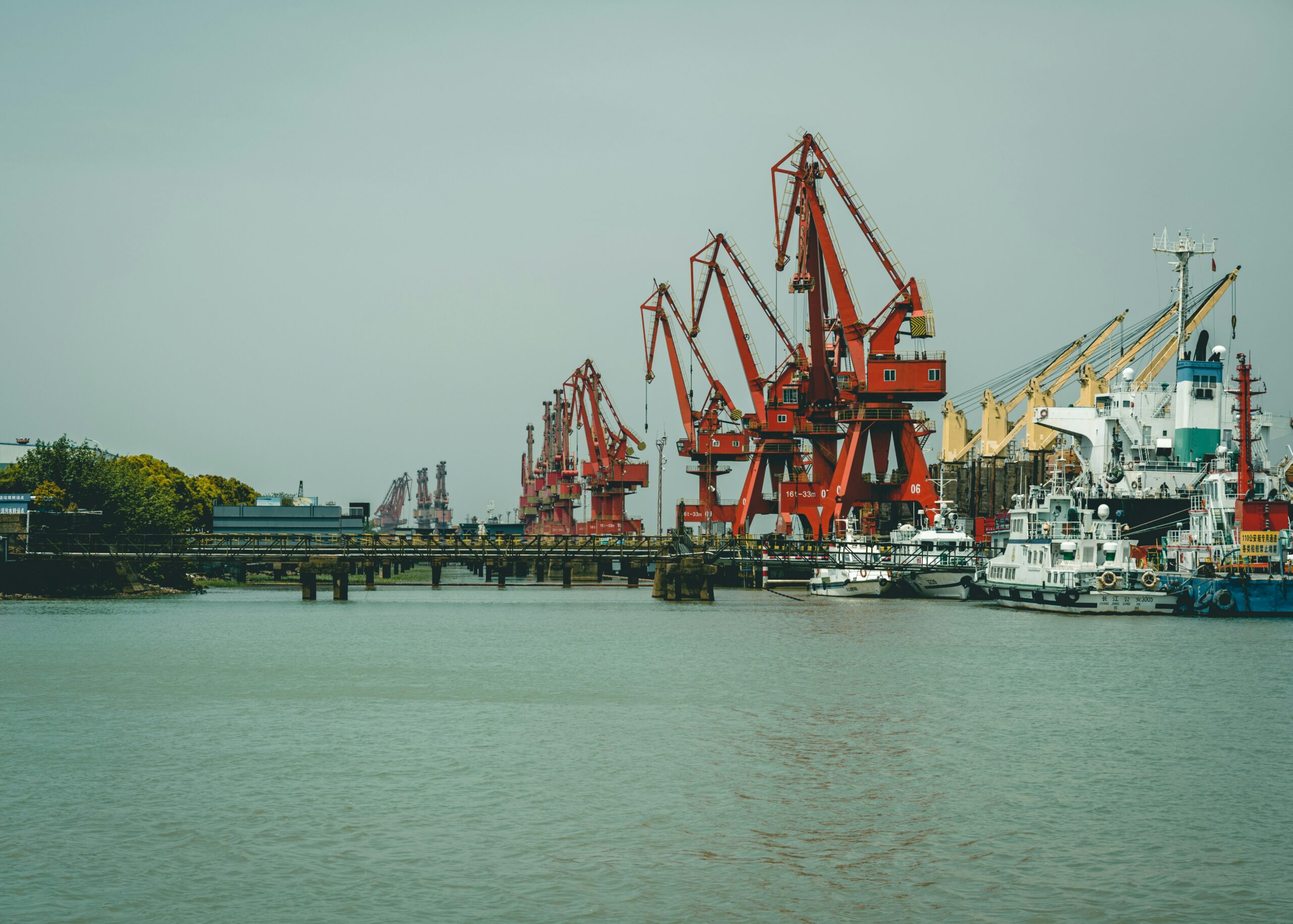Date of publication: 29 July 2025
Sergey Nedelko, Attorney at Law, Counsel, Head of Odesa Office
Source: Ukrainian Law Firms 2025
In 2025, the port infrastructure of Ukraine remains a key element of economic recovery and international trade. Despite the military challenges and regular attacks by the enemy, national and foreign investors remain keenly interested in Ukrainian ports, appreciating their potential for modernization and integration into European logistics chains. In this article we will focus on key investor expectations, wartime challenges, current trends and promising projects that are defining the new reality of the port sector.
- Stable Operation of the Ukrainian Sea Corridor and Restoration of Free Merchant Shipping
The Ukrainian Sea Corridor continues to demonstrate its extraordinary efficiency, ensuring reliable transportation of agricultural products and industrial goods without any restrictions on their range, except military cargo. Intensive work is being carried out to expand container traffic, which will help to diversify exports. According to the Ukrainian Seaports Authority (USPA), in 2024, Ukrainian ports reached a record cargo turnover of 97.2 million tonnes, or 57% over the previous year. In particular, 76.4 million tonnes of products were exported to 52 countries through the Ukrainian Sea Corridor, with the total cargo turnover reaching 79.9 million tonnes. The route was navigated by 3,138 vessels.
The corridor is open to civilian merchant vessels calling Great Odesa Ports (Chornomorsk, Odesa, Pivdennyi) which are not affiliated to Russian or sanctioned entities or individuals, and which neither fly the Russian flag nor are listed as offenders. All vessels are subject to mandatory inspection, sailing in caravans according to a plan agreed with the navy and must strictly follow the established route and speed limits, which are developed on the basis of the current military situation.
Today, the Ukrainian Sea Corridor is not only a response to Russia’s blockade, but also a strategic direction for the development of the maritime industry during martial law, which contributes to Ukraine’s integration into global trade traffic. Meanwhile, the main challenges and expectations of the industry in 2025 remain unchanged: the threat of missile attacks, the need to quickly restore and modernize port infrastructure, and ensure merchant shipping safety. Therefore, the business reasonably expects the Ukrainian Government to take active steps and make comprehensive solutions.
Investors in the port industry, both current and potential, hope for a further increase in cargo turnover through the Ukrainian Sea Corridor in 2025, as well as its extension to the ports of Mykolaiv and Kherson Regions, unless a peace agreement is reached.
- Protecting Port Infrastructure and Terminals Damage Compensation
In 2024, Ukraine’s seaports and port infrastructure were attacked by missiles and drones almost 100 times, and in January-February 2025 – 19 times. During the full-scale invasion, 382 facilities, including berths, warehouses, and terminals, were damaged or destroyed. The destruction of port infrastructure and the blockade of ports have been and will remain one of the main goals of the aggressor, so the port business expects the Government to take a comprehensive approach to stepping up port security, which is of strategic importance. These measures should include, inter alia, strengthening the port’s air defence, modernizing and making available shelters for dockworkers and foreign vessel crews, improving and facilitating ship clearance procedures, as well as digitalization.
It is worth especially considering establishing a specific mechanism to guarantee compensation for damage caused by an aggressor to port terminals. A positive example is the special procedure introduced in 2023 for compensating shipowners for damage caused to ships while entering the territorial seas of Ukraine. In 2023, the State Budget of Ukraine allocated UAH 20 billion to provide guarantees of compensation to shipowners, and UAH 2 billion in 2024 and 2025. The compensation procedure is annually approved by the Government, and the shipping business is currently awaiting procedure adoption for 2025.
The extension of compensation mechanisms to port infrastructure facilities will help to restore them quickly and strengthen maritime logistics. Another effective way to raise funds so as to compensate for terminal damages is insurance in cooperation with international partners, following the example of the Unity Facility, a ship insurance mechanism for war risks introduced in November 2023.
- Public-Private Partnership Development
Despite the full-scale war and wartime challenges, investors are committed to investing in port infrastructure development under public-private partnership. Chornomorsk seaport remains one of the key objects for infrastructure concessions in Ukraine. The Government and the Ministry of Development, in cooperation with international partners, including the IFC and EBRD, are actively promoting the idea and working to bring the port’s container and ferry terminals into concessions.
World-known port infrastructure operators from Turkey, as well as Europe and Asia, have already expressed interest in participating in the tender. The parties have completed the feasibility study, enlisted international advisors and are currently developing tender terms and conditions and a set of documents in line with international transparency standards. It is expected that in 2025 all arrangements will be completed and concession tenders will be announced, which will send a powerful message to investors from around the world about opportunities for investing in Ukraine despite the full-scale war.
- Compensation of Investments to Strategic Port Infrastructure Facilities, its Restoration and Modernization
The Law of Ukraine On Seaports of Ukraine (Article 27) entitles a private investor to compensation for its investments in strategic port infrastructure facilities, including hydraulic structures, including berths, piers, breakwaters, dams, canals, operational berth areas and other facilities designed to ensure the safety of navigation, maneuvering and berthing of vessels. Compensation should be paid out under a relevant agreement with the investor, concluded in accordance with the procedure determined by the Government. However, the procedure has not been approved despite the Act coming into force back in 2013.
At present, the Government and the USPA are facing an acute shortage of funds for implementing projects for the reconstruction, repair and maintenance of port infrastructure, especially berthing facilities, which are directly involved in cargo handling and generate port dues.
The majority of berths in seaports require urgent repair, modernization or reconstruction. Given the constant shelling of port infrastructure by the aggressor and the temporary occupation of the ports in Donetsk and Zaporizhzhia Regions, this situation may eventually become critical, which will certainly lead to a significant reduction in cargo handling volumes. Nevertheless, many investors are ready to invest in the repair, modernization and construction of new facilities even during a full-scale war, but this requires clear and transparent legislative regulation of the compensation mechanism.
This matter is more relevant and necessary than ever to maintain and restore the full functioning of the maritime sector, which is one of the state’s strategic priorities. This issue will become even more critical during the post-war restoration of port infrastructure affected by the aggressor. The Government is currently considering a new draft procedure for concluding agreements to compensate for investments in strategic port infrastructure. The business has already expressed its principled remarks on the draft in hopes that the Government will consider them and approve the revised procedure in 2025, which is, without doubt, vital for the port industry’s revival and development.
- Improving Tariff Policy of State Monopolies
It is well known that port dues at Ukrainian seaports are the highest in the Black Sea region and among the highest in the world, which has a negative effect on the competitiveness of the ports and the position of Ukrainian products on international markets. These issues are particularly challenging during a full-scale war, when logistical costs grow further due to several other factors.
The Ukrainian Seaports Act (Article 22) requires that the port dues rates for each port are set by the national Commission for state transport regulation in accordance with the methodology it approves. However, the Commission has not been established, and its functions are temporarily exercised by the Ministry of Development.
Despite multiple attempts and initiatives by the port business, the methodology was not approved. On 6 February 2024, the Ministry of Development published a Draft Order On Some Issues of Port Dues and the Voiding of the Ministry of Infrastructure of Ukraine, No.316 of 27 May 2013. However, the suggested draft does not meet the basic requirements of economic feasibility and transparency. When developing it, no model cost calculations for different types of vessels were made, as the business has consistently emphasized, which made it, as a result, impossible to assess the impact on the rates of port dues. Therefore, the port business remains hopeful that in 2025 the Government will manage to resolve this issue, which is of great importance for the port industry.
The lion’s share of cargo from/to seaports is delivered by rail, which plays a strategic role in the port industry. In December 2024, Public JSC Ukrainian Railways, the state-owned monopoly, initiated a significant increase in rail freight tariffs, explaining that this was due to the rising cost of supplying materials, works and services to related industries, primarily the energy and fuel and lubricants sectors. The port business has already expressed its concerns about the possible increase in tariffs, which will raise logistics costs and may have a negative impact on the volume of cargo flowing through Ukrainian seaports. Therefore, the port industry is expecting a reasonable position from Ukrainian Railways and support from the Government on this issue.

